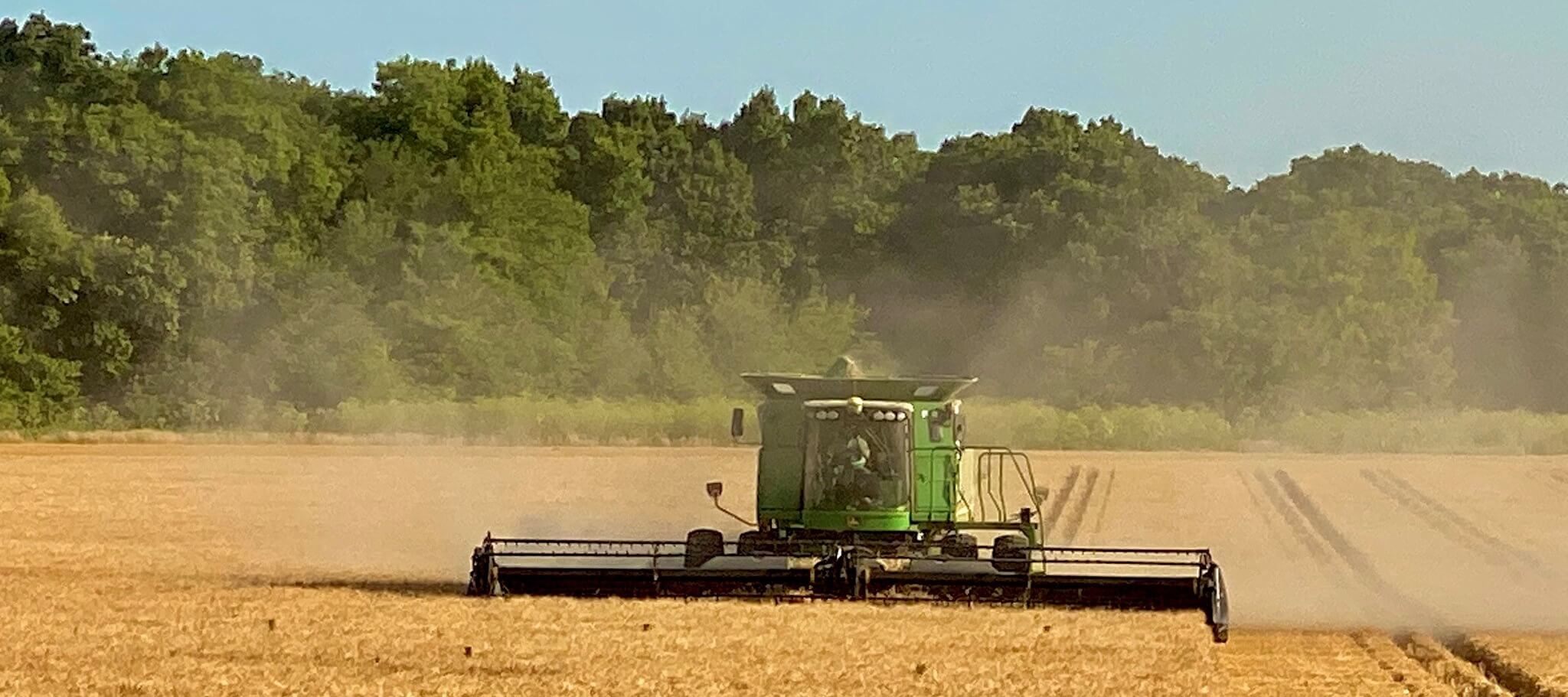Residue management: Research on plant tissue decomposition
by Ryan Stockwell
Explore misconceptions about residue management
Boosting soil biology plays the biggest role in residue management
Learn how reducing tillage and planting covers builds soil biology

Sometimes something as simple as burying underwear can provide clarity to a challenge that has frustrated farmers for hundreds of years. By now everyone has likely heard of the “soil your undies” challenge in which farmers bury cotton briefs in fields with different management practices, from tillage to cover crops. With a carbon to nitrogen ratio of around 32:1, cotton is more readily digestible to soil microbes than corn stover or wheat straw, allowing for a fairly quick indicator of soil microbial activity and thus, a field’s capacity to decompose crop residue.
This interest in burying undergarments to determine the best strategy to manage residue is quite new, however. For hundreds of years the limitations of planter technology meant growers had little choice but to till plant residue into the soil to ensure effective planting of the next cash crop. Even early no-till planter and drill technology could sometimes experience challenges cutting through residue to achieve uniform seed depth and consistent seed slot closing.
But as no-till planter and drill technology evolved and improved, growers and researchers began to wonder what practices had the biggest impact on soil decomposing crop residue, not just for planting success, but also to unlock nutrients to make them available to the next crop. Some growers concluded that tilling in residue sped up the decomposition process by cutting residue into smaller sizes, making it more available for microbes, while putting it in the soil meant it was closer to microbes, making it more convenient. The fact that there was no way to prove or disprove this conclusion meant the question remained truly unanswered while growers increasingly struggled with residue lasting multiple growing seasons, with tillage passes sometimes turning old residue up to the soil surface.
So what does the “soil your undies” test and more recent research reveal? Three important realities come to light.
-
Tilling in residue does not speed up decomposition. Instead, it just moves it from the soil surface.
-
Soil biology is significantly impacted by tillage, crop rotation, and residue management and this soil biology plays the biggest factor in residue decomposition.
-
Past research often experienced tunnel vision, focusing on short term questions (such as what can a grower do this year to manage residue) and ignoring long-term implications of annual management decisions (such as what happens to a soil’s capacity to cycle residue with intensive tillage or other annual management strategies).
Because no-till planter and drill technology has advanced considerably in the last 20 years, the challenge of residue management no longer needs to be dictated by planting concerns. Instead, we can manage residue guided by the primary purpose of building soil health and productive capacity. Considering the role soil biology has in cycling nutrients and the impacts of tillage on soil structure, infiltration, and drainage, any farmer planning to farm for more than five years has an easy conclusion; reducing tillage and adding cover crops to build soil biology is the best residue management strategy.
By Ryan Stockwell, Indigo Ag Senior Manager of Grower Engagement and Wisconsin Farmer
Citations
-“Soil Your Undies | NRCS Oregon.” 2018. Usda.gov. 2018. https://www.nrcs.usda.gov/wps/portal/nrcs/detail/or/soils/health/?cid=nrcseprd1470410.
-M. Al-Kaisi. Corn Residue Breakdown as Affected by Tillage and N Application. Integrated Crop Management (Nov. 2019).
-N. Eriksen-Hamel et al. Earthworm populations and growth rates related to long-term crop residue and tillage management.
This article may include information from third-party sources or other information that Indigo may not independently verify. Carbon quantification methods, processes and understandings are in their nascency and subject to change and continuous development. The information contained herein is for general informational purposes only and may be based on generally applicable assumptions that may not be applicable to any individual operation. Actual results may differ among growers and farms based on a large number of variables. Each operation should independently consider the financial implications and all potential risks and benefits of the use of any agronomic practice. Any payments under Carbon by Indigo are subject to multi-year vesting and are contingent on continued long-term maintenance of regenerative agricultural practices and soil carbon levels. All Carbon Credits generated are subject to buffer pool holdbacks required by third-party crediting; participants will not receive payments for such holdback. Neither Indigo nor its representatives or affiliates makes any representations, warranties or guarantees as to any specific outcomes (agronomic, financial or otherwise) in connection with any recommendations, calculations or predictions. Terms, conditions, limitations and eligibility requirements apply. See program agreement for additional details regarding Carbon by Indigo.
Farmers like you are getting paid to implement practices that improve soil health. With skyrocketing input costs, see how covers help.
You might also be interested in:
Neither Indigo nor any of its affiliates makes any representations, warranties or guarantees as to any specific results or outcomes, including, without limitation, with respect to soil health outcomes or any minimum amount of greenhouse gasses sequestered or number of carbon credits generated. Participation in Carbon by Indigo is subject to the terms, conditions and limitations of the program contained in the applicable enrollment agreement. Any payments under Carbon by Indigo are subject to multi-year vesting and are contingent on continued long-term maintenance of regenerative agricultural practices and soil carbon levels. All Carbon Credits generated are subject to buffer pool holdbacks required by third-party crediting; participants will not receive payments for such holdback. Not available in all areas.
500 Rutherford Ave, Boston, MA 02129 | 844.828.0240 | info@indigoag.com